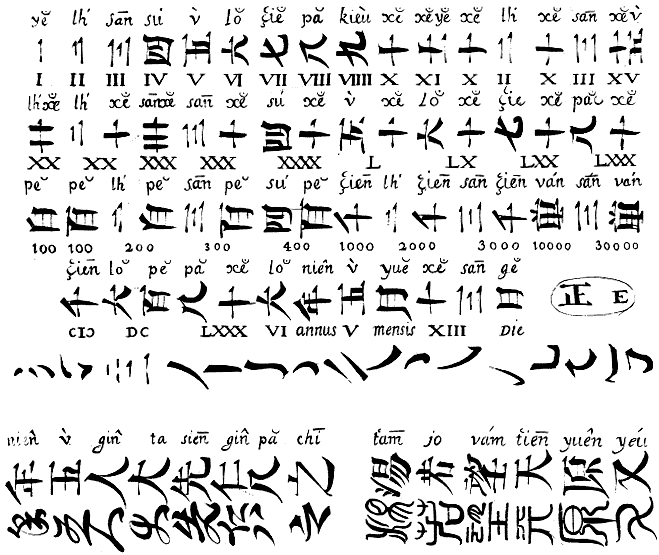A Taipei city councilor with the KMT on Tuesday launched an attack on President Chen Shui-bian disguised as a signage proposal. His idea: Change the name of Ketagalan Boulevard (凱達格蘭大道 Kǎidágélán Dàdào), the street leading to the Presidential Office.
The city councilor, Yang Shi-qiu (楊實秋, Yang Shih-chiu), called for a change to Lǐ-yì-lián Dàdào, which is literally Propriety, Righteousness, [and] Honesty Boulevard. While that might sound nice, it’s actually a disguised insult.
John DeFrancis was all over this word play a long time ago in “The Singlish Affair,” the biting satire that leads off his essential book The Chinese Language: Fact and Fantasy. DeFrancis explains assigning the name Li Yilian to a person in his story:
The most complex is the name Lǐ Yìlián. Those who know Chinese may get the point if it is written in characters: 禮義廉 or, in simplified characters, 礼义廉. The three characters mean respectively “propriety, morality, modesty” and form part of a four-character phrase listing a number of Confucian virtues of which the fourth is 恥 (chǐ “a sense of shame”). The omission of the fourth character is part of a Chinese word game in which the reader is supposed to guess the last item when it is omitted — much as if we had to tell what is lacking in the list of the three Christian virtues of “Faith, Hope, and ______.” The omission of the fourth character is expressed as 無恥 or 无耻 (wúchǐ “lacking a sense of shame”). In short, calling someone Mr. Lǐ Yìlián seems to praise him as Mr. Propriety, Morality, and Modesty but actually insults him as Mr. Shameless.
By renaming the street “people will know that the person who works at the Presidential Office at the end of the boulevard has no sense of chi [恥, shame],” Yang said.
Taipei Mayor Ma Ying-jeou, who also serves as chairman of the KMT, didn’t care for the idea of his city having a Lǐ-yì-lián Dàdào or Wúchǐ Dàdào (both of which could be translated as “Shameless Boulevard” — the first figuratively, the second literally) but said that the name Lǐ-yì-lián-chǐ Dàdào (“Propriety, Righteousness, Honesty, and a Sense of Shame Boulevard”) could be discussed.
The name of Ketagalan Boulevard is especially interesting from a number of standpoints.
- Since the street is named after a tribe that lived long ago in what is now Taipei, Ketagalan Boulevard is one of the only road names in all of the capital of Taiwan that has much of anything to do specifically with Taiwan, as opposed to China. (Jilong/Keelung Road is the only other one that springs to mind at the moment.)
- It is one of the only Taipei street names that isn’t bisyllabic.
- The street itself is not really independent as much as an extention of Ren’ai Road. (Don’t forget that apostrophe.)
- The name has been changed before. As Mark Caltonhill notes in What’s in changing a name?, “the vast majority of the island’s streets and even many towns were simply renamed by the KMT regime”. But in this case I’m referring to a relatively recent renaming. In 1996, Chen Shui-bian, who was then mayor of Taipei, oversaw the renaming of the street from Jieshou Road (介壽, Jièshòu Lù, i.e., “Long Live Chiang Kai-shek Road”).
- Chinese characters aren’t a good fit for “Ketagalan,” which comes out 凱達格蘭 (Kǎidágélán).
Here’s a Mandarin-language story on this:
Miànduì dào Chén Shuǐ-biǎn huódòng bùduàn, Táiběi Shìyìyuán Yáng Shí-qiū jīntiān biǎoshì, tā yǐ zhǎnkāi lián shǔ, tí’àn bǎ Ketagalan Dàdào gēngmíng wéi Lǐ-yì-lián Dàdào; Táiběi shìzhǎng Mǎ Yīngjiǔ suī rènwéi yǒu chuàngyì, dànshì yǒu màrén “wúchǐ” zhī xián, tā bù zànchéng.
Táiběi Shìyìhuì xiàwǔ jǔxíng shìzhèng zǒng zhìxún shí, Yáng Shí-qiū zhìxún biǎoshì, Chén Shuǐ-biǎn zǒngtǒng zài Táiběi shìzhǎng rènnèi zài wèijīng mínyì zhēngxún xià, jiù bǎ jièshòu lù gǎimíng wéi Ketagalan Dàdào, rìqián yòu làngfèi Xīn Táibì shàng yì yuán, bǎ Zhōngzhèng Guójì Jīchǎng gēngmíng wéi Táiwān Táoyuán Jīchǎng. Yáng Shí-qiū yě lián shǔ tí’àn, yāoqiú shì-fǔ jiāng Ketagalan Dàdào gēngmíng wéi “Lǐ-yì-lián Dàdào”.
Mǎ Yīngjiǔ huídá shuō, dàolù yǐ zhèngmiàn mìngmíng wèi yuánzé, ér bù shì fùmiàn mìngmíng, yìyuán de yòngyì yǒu chuàngyì, dànshì kèyì shěnglüè jiùshì màrén “wúchǐ” zhī xián. Yáng Shí-qiū huíyìng shuō, ruò shì-fǔ yǒu yílǜ, Ketagalan Dàdào kě gǎiwéi “Lǐ-yì-lián-chǐ Dàdào”.
Mǎ Yīngjiǔ huíyìng shuō, tā bù zànchéng Ketagalan Dàdào gǎiwéi “Lǐ-yì-lián Dàdào”, zhèyàng huì biànchéng “Wúchǐ Dàdào”, dànshì ruòshì “Lǐ-yì-lián-chǐ Dàdào”, zhè kěyǐ tǎolùn.
Yìyuán Jiǎng Nǎi-xīn suíhòu qiángdiào, Yáng Shí-qiū de tí’àn jiùshì tíxǐng wéizhèng zhě bùkě wúchǐ, ruò Mǎ Yīngjiǔ dānxīn bèi rén zhǐwéi yǒu màrén wúchǐ de yìsi, tā jiànyì gǎiwéi “Bùkě Wúchǐ Dàdào”. Mǎ Yīngjiǔ xiào shuō, zhèige jiànyì gèng yǒu chuàngyì, dànshì xū jīngguò shì-fǔ nèibù tǎolùn.
sources:


